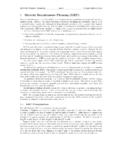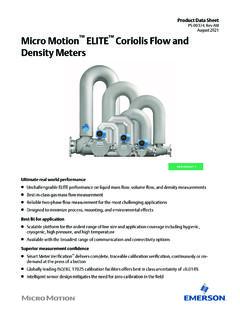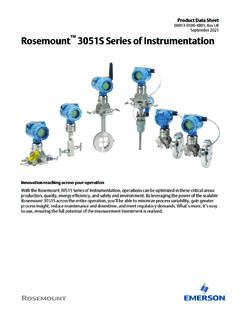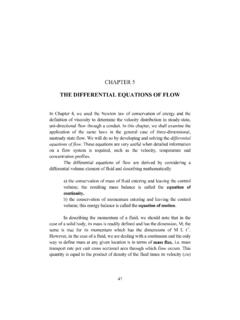Transcription of HAPTER 3 PHYSIOLOGIC RESPONSES LONG-TERM …
1 ContentsIntroduction ..61 PHYSIOLOGIC RESPONSES to Episodes of Exercise ..61 Cardiovascular and Respiratory Systems ..61 Cardiovascular RESPONSES to Exercise ..62 Cardiac Output ..62 Blood Flow ..63 Blood Pressure ..63 Oxygen Extraction ..63 Coronary Circulation ..63 Respiratory RESPONSES to Exercise ..64 Resistance Exercise ..65 Skeletal Muscle ..65 Skeletal Muscle Energy Metabolism ..65 Energy Systems ..65 Metabolic Rate ..66 Maximal Oxygen Uptake ..66 Lactate Threshold ..66 Hormonal RESPONSES to Exercise ..66 Immune RESPONSES to Exercise ..67 LONG-TERM Adaptations to Exercise Training ..67 Adaptations of Skeletal Muscle and Bone ..67 Metabolic Adaptations ..69 Cardiovascular and Respiratory Adaptations ..71 LONG-TERM Cardiovascular Adaptations.
2 71 Respiratory Adaptations ..71 CHAPTER 3 PHYSIOLOGIC RESPONSES AND LONG-TERMADAPTATIONS TO EXERCISEC ontents, continuedMaintenance, Detraining, and Prolonged Inactivity .. 71 Maintaining Fitness and Muscular Strength .. 72 Detraining .. 72 Prolonged Inactivity .. 72 Special Considerations .. 73 Disability .. 73 Environmental Conditions .. 73 Effects of Age .. 75 Differences by Sex .. 76 Conclusions .. 77 Research Needs .. 77 References .. 77 IntroductionWhen challenged with any physical task, thehuman body responds through a series ofintegrated changes in function that involve most, ifnot all, of its PHYSIOLOGIC systems. Movement re-quires activation and control of the musculoskeletalsystem; the cardiovascular and respiratory systemsprovide the ability to sustain this movement overextended periods.
3 When the body engages in exer-cise training several times a week or more frequently,each of these PHYSIOLOGIC systems undergoes specificadaptations that increase the body s efficiency andcapacity. The magnitude of these changes dependslargely on the intensity and duration of the trainingsessions, the force or load used in training, and thebody s initial level of fitness. Removal of the train-ing stimulus, however, will result in loss of theefficiency and capacity that was gained throughthese training-induced adaptations; this loss is aprocess called chapter provides an overview of how thebody responds to an episode of exercise and adaptsto exercise training and detraining. The discussionfocuses on aerobic or cardiorespiratory enduranceexercise ( , walking, jogging, running, cycling,swimming, dancing, and in-line skating) and resis-tance exercise ( , strength-developing exercises).
4 It does not address training for speed, agility, andflexibility. In discussing the multiple effects ofexercise, this overview will orient the reader to thephysiologic basis for the relationship of physicalactivity and health. PHYSIOLOGIC information perti-nent to specific diseases is presented in the nextchapter. For additional information, the reader isreferred to the selected textbooks shown in Textbooks on Exercise Physiology strand PO, Rodahl K. Textbook of work edition. New York: McGraw-Hill Book Company, GA, Fahey TD, White TP. Exercise physiology:human bioenergetics and its applications. 2nd View, CA: Mayfield Publishing Company, E, Bowers R, Foss M. The physiological basis forexercise and sport. 5th edition.
5 Madison, WI: Brownand Benchmark, WD, Katch FI, Katch VL. Essentials ofexercise physiology. Philadelphia, PA: Lea andFebiger, SK, Howley ET. Exercise physiology: theoryand application to fitness and performance. Dubuque,IA: William C. Brown, JH, Costill DL. Physiology of sport andexercise. Champaign, IL: Human Kinetics, RESPONSES to Episodesof ExerciseThe body s PHYSIOLOGIC RESPONSES to episodes ofaerobic and resistance exercise occur in the muscu-loskeletal, cardiovascular, respiratory, endocrine,and immune systems. These RESPONSES have beenstudied in controlled laboratory settings, where ex-ercise stress can be precisely regulated and physi-ologic RESPONSES carefully and Respiratory SystemsThe primary functions of the cardiovascular andrespiratory systems are to provide the body withCHAPTER 3 PHYSIOLOGIC RESPONSES AND LONG-TERMADAPTATIONS TO EXERCISE62 Physical Activity and Healthoxygen (O2) and nutrients, to rid the body of carbondioxide (CO2) and metabolic waste products, tomaintain body temperature and acid-base balance,and to transport hormones from the endocrineglands to their target organs (Wilmore and Costill1994).
6 To be effective and efficient, the cardiovascu-lar system should be able to respond to increasedskeletal muscle activity. Low rates of work, such aswalking at 4 kilometers per hour ( miles perhour), place relatively small demands on the cardio-vascular and respiratory systems. However, as therate of muscular work increases, these two systemswill eventually reach their maximum capacities andwill no longer be able to meet the body s RESPONSES to ExerciseThe cardiovascular system, composed of the heart,blood vessels, and blood, responds predictably tothe increased demands of exercise. With few excep-tions, the cardiovascular response to exercise isdirectly proportional to the skeletal muscle oxygendemands for any given rate of work, and oxygenuptake ( VO2) increases linearly with increasing ratesof OutputCardiac output ( Q) is the total volume of bloodpumped by the left ventricle of the heart per is the product of heart rate (HR, number of beatsper minute) and stroke volume (SV, volume of bloodpumped per beat).
7 The arterial-mixed venous oxygen(A--vO2) difference is the difference between the oxy-gen content of the arterial and mixed venous blood. Aperson s maximum oxygen uptake ( VO2 max) is afunction of cardiac output ( Q) multiplied by theA--vO2 difference. Cardiac output thus plays an im-portant role in meeting the oxygen demands forwork. As the rate of work increases, the cardiacoutput increases in a nearly linear manner to meetthe increasing oxygen demand, but only up to thepoint where it reaches its maximal capacity ( Q max).To visualize how cardiac output, heart rate, andstroke volume change with increasing rates of work,consider a person exercising on a cycle ergometer,starting at 50 watts and increasing 50 watts every 2minutes up to a maximal rate of work (Figure 3-1 A,B, and C).
8 In this scenario, cardiac output and heartrate increase over the entire range of work, whereasstroke volume only increases up to approximately 40 Figure 3-1. Changes in cardiac output (A), heart rate (B), and stroke volume (C) with increasing rates of work on the cycle ergometer(A)(B)6810121416182022801001201 4016018020060708090100110120255075100125 150175 200255075100 Power (watts)Power (watts)Power (watts)Stroke volume (ml/beat)Cardiac output (liters/min)Heart rate (beats/min)125150175 200255075100125150175 200(C)63 PHYSIOLOGIC RESPONSES and LONG-TERM Adaptations to Exerciseis generally much higher in these patients, likely owingto a lesser reduction in total peripheral the first 2 to 3 hours following exercise,blood pressure drops below preexercise resting lev-els, a phenomenon referred to as postexercise hy-potension (Isea et al.)
9 1994). The specific mechanismsunderlying this response have not been acute changes in blood pressure after an episodeof exercise may be an important aspect of the role ofphysical activity in helping control blood pressure inhypertensive ExtractionThe A--vO2 difference increases with increasing ratesof work (Figure 3-2) and results from increasedoxygen extraction from arterial blood as it passesthrough exercising muscle. At rest, the A--vO2 differ-ence is approximately 4 to 5 ml of O2 for every 100 mlof blood (ml/100 ml); as the rate of work approachesmaximal levels, the A--vO2 difference reaches 15 to 16ml/100 ml of CirculationThe coronary arteries supply the myocardium withblood and nutrients. The right and left coronaryarteries curve around the external surface of the heart,then branch and penetrate the myocardial musclebed, dividing and subdividing like branches of a treeto form a dense vascular and capillary network tosupply each myocardial muscle fiber.
10 Generally onecapillary supplies each myocardial fiber in adult hu-mans and animals; however, evidence suggests thatthe capillary density of the ventricular myocardiumcan be increased by endurance exercise rest and during exercise, myocardial oxygendemand and coronary blood flow are closely coupling is necessary because the myocardiumdepends almost completely on aerobic metabolismand therefore requires a constant oxygen at rest, the myocardium s oxygen use is highrelative to the blood flow. About 70 to 80 percent ofthe oxygen is extracted from each unit of bloodcrossing the myocardial capillaries; by comparison,only about 25 percent is extracted from each unitcrossing skeletal muscle at rest. In the healthy heart,a linear relationship exists between myocardial oxy-gen demands, consumption, and coronary bloodflow, and adjustments are made on a beat-to-beatto 60 percent of the person s maximal oxygen uptake( VO2 max), after which it reaches a plateau.
















